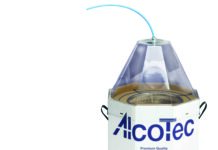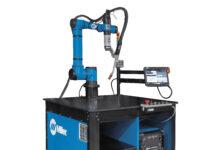New functionality optimizes the design of fastened airframe parts
The latest release of Siemens’ Syncrofit™ software introduces new fastener layout and part sizing functionality which helps airframe engineers reduce the time to generate fastener patterns, perform initial part sizing, validate designs and adapt to subsequent design changes by as much as 40 percent. The new version (Syncrofit 13) eliminates the need for manufacturing engineers to manually verify that the hundreds of thousands, possibly millions, of fasteners in an airframe structure are properly consumed according to plan and that the assembly meets design requirements. Syncrofit 13 also expands integration with Siemens’ Teamcenter® portfolio. Syncrofit, which is used for designing and manufacturing complex assemblies and large aerostructures, is an offering of Siemens’ product lifecycle management (PLM) software business unit.
Traditional methods for consuming airframe fasteners into manufacturing plans were extremely tedious and often the source of costly errors and rework on the shop floor. Syncrofit 13 strengthens Siemens’ product portfolio for airframe development by integrating its production-proven Airframe Manufacturing Environment (AME) module into NX™ software, Siemens’ integrated computer-aided design, manufacturing and engineering analysis (CAD/CAM/CAE) solution. AME, which is also integrated with the CATIA® software V5 CAD system, enables engineers to digitally define the changing state of parts as they progress through the various stages of airframe assembly. This addresses critical needs of airframe manufacturers as they strive to reduce development costs, improve product quality, and meet aggressive schedule targets.
Syncrofit 13 also includes expanded integration capabilities with Teamcenter, the world’s most widely used digital lifecycle management software. This allows users to automatically associate and manage data for automated manufacturing assembly processes, eliminating time-consuming and error prone manual processes. It also reduces the chance of using outdated manufacturing data, which can result in excessive scrap and rework.
“Enhancements in Syncrofit 13 help improve productivity by further integrating with CAD and PLM software, eliminating manual methods for consuming engineering data for hole and fastener requirements. This is crucial to efficiently developing aerostructures and making smarter design decisions,” said Steve Luby, Senior Vice President, Specialized Engineering Software, Siemens PLM Software. “Syncrofit 13 now provides full traceability from design to manufacture to help engineers deliver better products faster and more efficiently.”
For further information on Syncrofit, please see:
www.siemens.com/plm/syncrofit13
Follow us on Twitter at:
www.twitter.com/siemens_press
The Siemens Industry Sector (Erlangen, Germany) is the world’s leading supplier of innovative and environmentally friendly products and solutions for industrial customers. With end-to-end automation technology and industrial software, solid vertical-market expertise, and technology-based services, the Sector enhances its customers’ productivity, efficiency, and flexibility. With a global workforce of more than 100,000 employees, the Industry Sector comprises the Divisions Industry Automation, Drive Technologies and Customer Services as well as the Business Unit Metals Technologies.
For more information, visit:
http://www.siemens.com/industry
The Siemens Industry Automation Division (Nuremberg, Germany) supports the entire value chain of its industrial customers – from product design to production and services – with an unmatched combination of automation technology, industrial control technology, and industrial software. With its software solutions, the Division can shorten the time-to-market of new products by up to 50 percent. Industry Automation comprises five Business Units: Industrial Automation Systems, Control Components and Systems Engineering, Sensors and Communications, Siemens PLM Software, and Water Technologies.
For more information, visit:
http://www.siemens.com/industryautomation





















